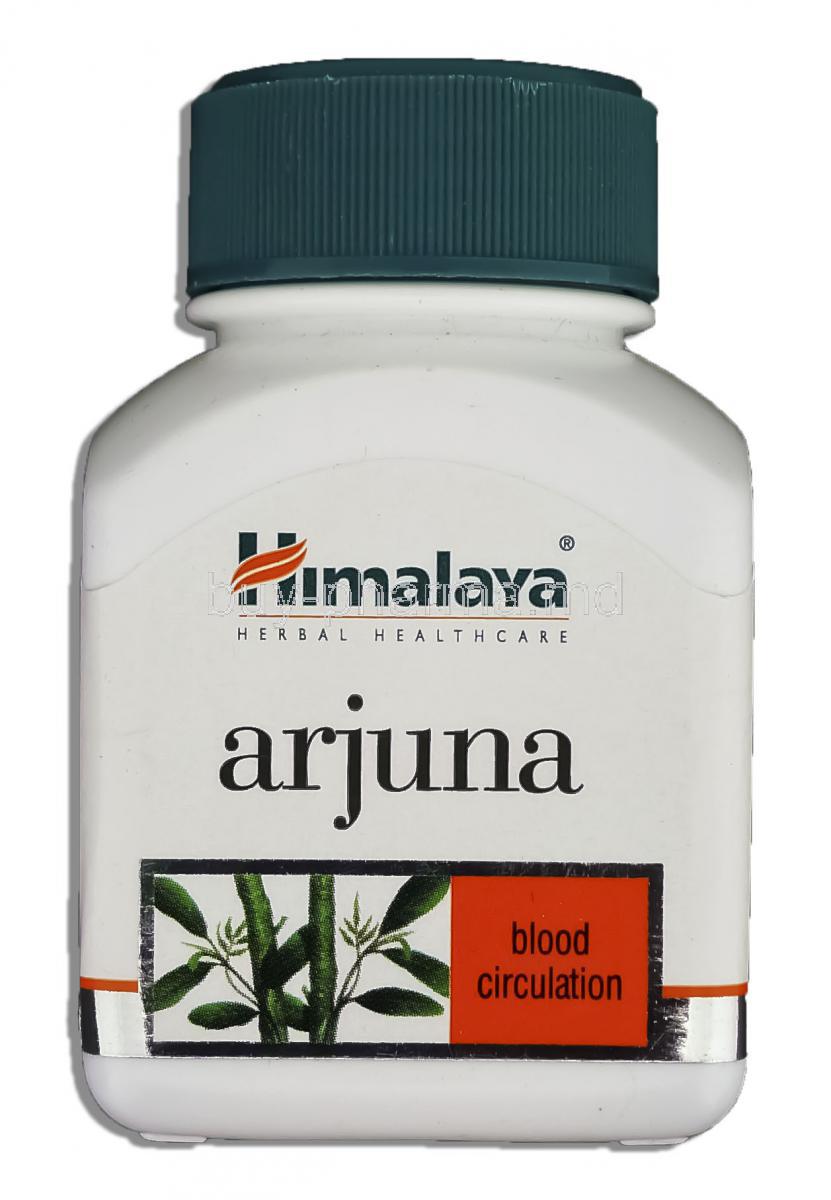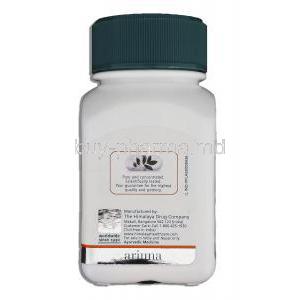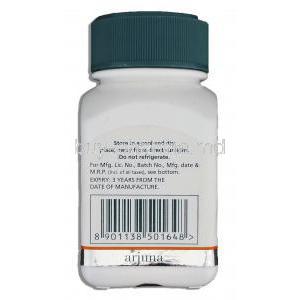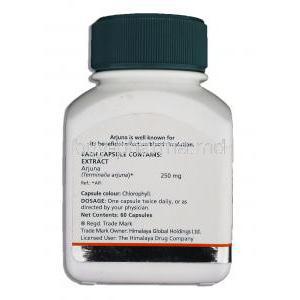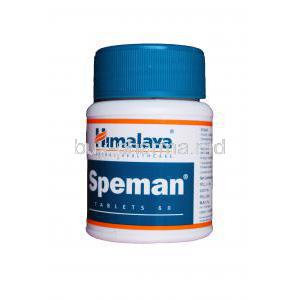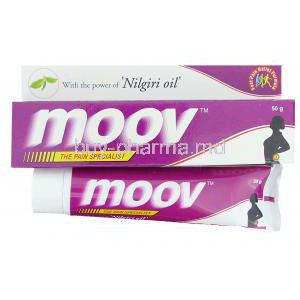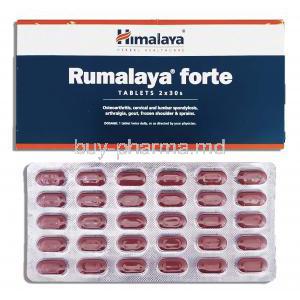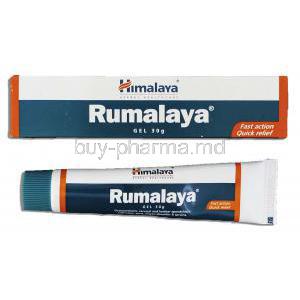1. Introduction to Himalaya Arjuna
Overview of Himalaya Arjuna as an Ayurvedic Cardioprotective Supplement
Himalaya Arjuna is a renowned herbal supplement formulated using the bark of *Terminalia arjuna*, a time-honored remedy in Ayurvedic medicine. It is recognized for its potent cardioprotective effects, supporting heart function and vascular health through a natural and holistic approach.
Historical Background and Traditional Uses of Terminalia Arjuna Bark
The bark of *Terminalia arjuna* has been used for over three millennia in classical Ayurvedic texts. Historically, it was prescribed for conditions like heart palpitations, chest pain, and general cardiac weakness. Its legacy as a heart tonic remains integral in both traditional and modern formulations.
Modern Applications and Relevance in Integrative Medicine
Today, Himalaya Arjuna is valued in integrative medicine as a complementary treatment in cardiovascular care. It bridges the gap between ancient herbal wisdom and evidence-based modern therapeutics, offering a gentle yet effective option for heart health support.
2. Composition and Active Ingredients
Botanical Source: Terminalia Arjuna Bark Extract
The primary ingredient in Himalaya Arjuna is a standardized extract of *Terminalia arjuna* bark, harvested sustainably and processed under strict phytopharmaceutical standards.
Key Bioactive Compounds
- Arjunolic acid – confers cardiotonic properties - Flavonoids – support antioxidant defenses - Tannins – aid in vascular integrity - Glycosides – modulate cardiac contractility
Standardization and Quality Control Measures by Himalaya
Himalaya ensures high purity, potency, and safety through: - Advanced extraction technologies - Batch-wise phytochemical profiling - GMP-certified manufacturing protocols
Form Available
- Tablets - Capsules - Syrup (less commonly)
3. Mechanism of Action: How Himalaya Arjuna Works
Cardioprotective Actions: Myocardial Strengthening and Improved Oxygenation
Arjuna enhances myocardial contractility and promotes efficient oxygen utilization, thereby improving cardiac output without increasing myocardial oxygen demand.
Antioxidant Properties and Free Radical Scavenging
Its flavonoid-rich composition neutralizes reactive oxygen species, protecting myocardial tissue from oxidative stress and delaying the progression of cardiac conditions.
Support for Vascular Tone and Cholesterol Regulation
Arjuna helps maintain optimal vascular tone and elasticity while supporting healthy lipid profiles, including LDL reduction and HDL elevation.
Impact on Systolic Function and Endothelial Protection
Clinical and preclinical data suggest Arjuna may enhance systolic performance and safeguard endothelial integrity by modulating nitric oxide pathways and inflammatory mediators.
4. Therapeutic Uses of Himalaya Arjuna
4.1. Primary Indications
- Management of mild to moderate hypertension
- Adjunct in the treatment of stable angina and ischemic heart disease
- Supportive therapy for congestive heart failure (CHF)
4.2. Adjunctive and Preventive Use
- Facilitates cardiac recovery post-myocardial infarction
- Maintains baseline blood pressure and serum lipid balance
- Reduces the cardiovascular impact of chronic emotional and physical stress
5. Off-Label and Emerging Uses
- Potential regulatory effects on mild cardiac arrhythmias
- Hepatoprotective benefits in liver enzyme stabilization
- Used by endurance athletes for enhancing cardiac resilience
- Antioxidant support in metabolic syndrome and prediabetes
6. Dosage and Administration Guidelines
Recommended Dosage for Adults
- Standard dose: 1–2 tablets twice daily, post meals - Customization based on physician guidance and comorbidities
Timing and Frequency of Administration
- Consistent administration is key to efficacy - Preferably after meals to reduce gastrointestinal discomfort
Duration of Use for Therapeutic Effect
- Minimum 4–6 weeks for observable benefits - Long-term use advisable under supervision in chronic cases
Dosage Considerations with Other Cardiac Medications
- Monitor for additive hypotensive effects - Dosage adjustments may be necessary with concurrent beta-blocker use
7. Side Effects and Tolerability Profile
7.1. Common Side Effects
- Mild gastrointestinal upset (e.g., bloating, constipation) - Occasional dizziness or headache
7.2. Less Common but Reported Adverse Effects
- Hypotension in individuals with low baseline BP - Fatigue or oral dryness after prolonged use
8. Important Drug and Herb Interactions
- May potentiate effects of beta-blockers and ACE inhibitors
- Caution advised when taken with anticoagulants due to potential additive effects
- Possible herb-drug interaction with digitalis glycosides
- Use with other adaptogenic herbs should be coordinated for synergistic or competing effects
9. Contraindications for Use
- Known hypersensitivity to Terminalia arjuna: Individuals with documented allergies to *Terminalia arjuna* or its derivatives should avoid use to prevent allergic reactions ranging from mild skin rashes to severe anaphylactic responses.
- Hypotension or bradycardia history: As Himalaya Arjuna exhibits mild hypotensive and heart rate-lowering properties, its use is contraindicated in individuals with a history of low blood pressure or bradycardia, unless monitored closely.
- Patients with chronic liver or kidney impairment (when not supervised): The metabolism and clearance of herbal compounds can be altered in hepatic or renal insufficiency, necessitating medical supervision before use.
10. Warnings and Precautions Before Use
- Need for supervision in individuals with serious heart conditions: Patients with advanced cardiac disorders, such as arrhythmias or structural heart disease, should only use Himalaya Arjuna under medical guidance due to its bioactive impact on cardiovascular function.
- Risk of sudden blood pressure changes: The supplement may cause unexpected fluctuations in blood pressure, especially when combined with other antihypertensive agents.
- Monitoring when used alongside prescription cardiovascular drugs: Co-administration with beta-blockers, ACE inhibitors, or diuretics requires caution due to potential additive or potentiating effects.
11. Guidelines for Careful Administration
11.1. Administration in Patients with Comorbidities
- Heart failure with arrhythmia: While Arjuna supports cardiac function, patients with concurrent arrhythmias should be monitored to avoid rhythm destabilization or interaction with antiarrhythmic medications.
- Diabetes with vascular complications: Care is advised when used in diabetics with microvascular or macrovascular disease due to its potential influence on endothelial function and blood pressure.
11.2. Monitoring Parameters
- Periodic blood pressure and ECG monitoring: Regular assessments are essential to track cardiovascular response and detect any adverse effects early.
- Lipid profile and liver function testing: Baseline and periodic lipid panels and hepatic enzyme evaluations may be warranted in long-term use scenarios or when used with other lipid-lowering or hepatically-metabolized agents.
12. Use in Special Populations
12.1. Elderly Patients
- Adjusted dosing due to slower metabolism: Age-related metabolic decline may necessitate lower or less frequent dosing to avoid accumulation and adverse effects.
- Polypharmacy risks and drug interaction considerations: Seniors often take multiple medications; potential interactions must be reviewed carefully to avoid negative outcomes.
12.2. Pregnant and Nursing Women
- Limited clinical safety data: There is insufficient evidence regarding the safety of *Terminalia arjuna* in pregnancy and lactation, warranting caution.
- Avoidance unless under medical supervision: Use during pregnancy or breastfeeding should be reserved for situations where benefits outweigh risks, as assessed by a qualified practitioner.
12.3. Pediatric Use
- Lack of safety data in children under 12: Himalaya Arjuna is not recommended in younger children due to the absence of established pediatric dosing protocols and safety evaluations.
- Use only when prescribed by a qualified healthcare provider: If deemed necessary, pediatric use should be strictly supervised and tailored to the child’s condition and physiology.
13. Overdose and Toxicity Risks
- Symptoms of overdose: Clinical signs may include bradycardia, marked hypotension, dizziness, and in rare instances, loss of consciousness or syncope.
- Emergency measures and symptomatic management: Immediate discontinuation, supportive care (including IV fluids and cardiac monitoring), and professional medical evaluation are indicated in suspected overdose scenarios.
14. Storage and Shelf-Life Instructions
- Ideal storage temperature and moisture protection: Store in a cool, dry place below 30°C. Avoid exposure to humidity or temperature fluctuations, which can degrade active components.
- Shelf life and expiry considerations: Always adhere to the manufacturer’s expiry date. Do not consume products past their labeled expiration to ensure potency and safety.
- Packaging and labeling precautions: Keep the product in its original packaging to avoid contamination and ensure clear visibility of batch information and expiry.
15. Handling Precautions and Product Safety
- Keeping out of reach of children: As with all supplements and medications, storage in a secure location away from children is imperative to prevent accidental ingestion.
- Avoiding exposure to sunlight and heat: Direct sunlight and excessive warmth can compromise the stability and efficacy of the herbal extract.
- Instructions on safe disposal of unused tablets: Unused or expired tablets should be disposed of responsibly, preferably following local pharmaceutical disposal guidelines to avoid environmental contamination.
Himalaya Arjuna FAQ
- What is Himalaya Arjuna used for?
- What does Arjuna do to your body?
- What is Arjuna supplement used for?
- Does Himalaya Arjuna reduce blood pressure?
- Can you take Arjuna everyday?
- Is Arjuna safe for kidneys?
- What are the disadvantages of Arjuna?
- Can I take Arjuna in empty stomach?
- Can Arjuna remove heart blockage?
- How long does it take for Arjuna to work?
- How long does it take for arjuna to lower blood pressure?
- What is arjuna mainly used as?
- Is arjuna good for lungs?
- Is arjuna good for cholesterol?
- Is arjuna good for heart palpitations?
- Is Arjuna anti-inflammatory?
- Does arjuna act as blood thinner?
- Who should not take arjuna powder?
What is Himalaya Arjuna used for?
It helps the heart function properly and enhances heart well-being.
What does Arjuna do to your body?
Arjun assists in managing heart conditions and enhancing heart performance effectively while also supporting the maintenance of blood pressure and heart rate attributed to its cardiac tonic properties.
What is Arjuna supplement used for?
- Angina pain
- High blood pressure
- Heart failure
- High cholesterol levels
Does Himalaya Arjuna reduce blood pressure?
It also helps keep the heart healthy by regulating blood pressure within the normal range.
Can you take Arjuna everyday?
Yes
Is Arjuna safe for kidneys?
Yes
What are the disadvantages of Arjuna?
- Abdominal pain.
- Nausea or vomiting.
- Digestive problems such as gas, bloating, and diarrhoea.
- Skin rashes.
- High doses of arjuna may cause drowsiness, dizziness, and confusion.
Can I take Arjuna in empty stomach?
Yes
Can Arjuna remove heart blockage?
Arjun assists in enhancing blood flow in the arteries by lowering the risk of clot formation and safeguarding the heart muscles.
How long does it take for Arjuna to work?
3-4 weeks
How long does it take for arjuna to lower blood pressure?
1 month
What is arjuna mainly used as?
In heart failure-related conditions, such as cardiomyopathy and atherosclerosis, induced myocardial necrosis.
Is arjuna good for lungs?
Yes
Is arjuna good for cholesterol?
Yes
Is arjuna good for heart palpitations?
Yes
Is Arjuna anti-inflammatory?
Yes
Does arjuna act as blood thinner?
For individuals diagnosed with diabetes, Arjun helps to thin the blood and reduce the body's blood sugar levels.
Who should not take arjuna powder?
Breastfeeding mothers should not take Arjun as it may lower blood sugar levels.

